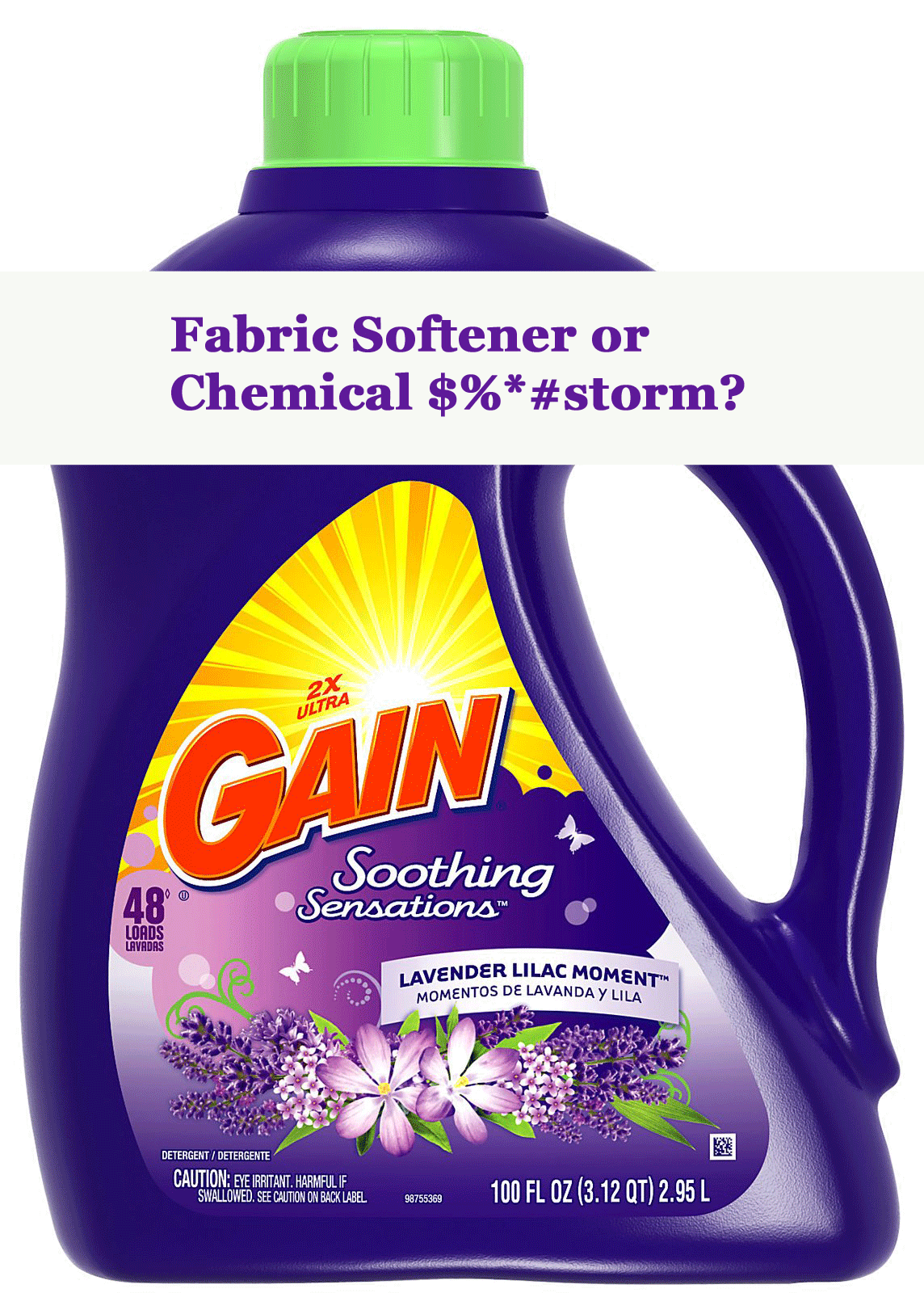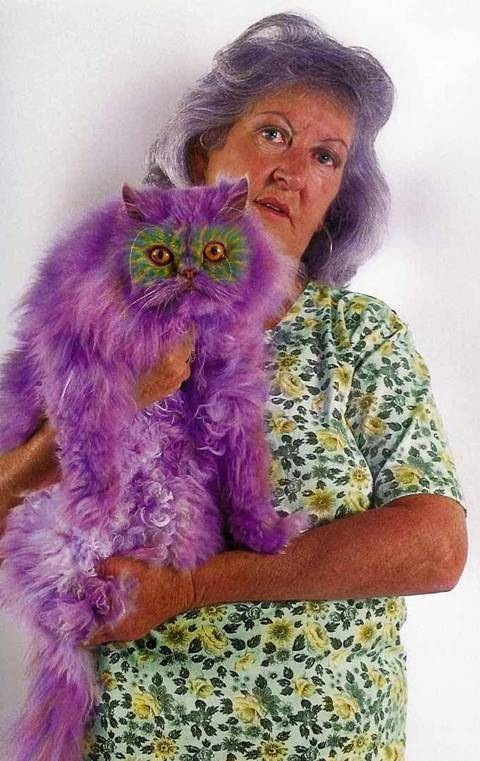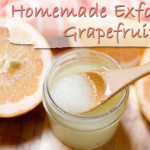This is a guest post by my intern/assistant CocoNoel. Follow her blog and facebook here.
During the mid-19th century, dryer sheets (and subsequently liquid fabric softener) were invented to solve the problem of dryers making fabric feel like rocks. Don’t believe me? Look at old pictures of your relatives and tell me those aren’t the expressions of people who are sleeping on sheets that feel like flint.

Looks pretty stiff, right? Photo credit
So how do dryer sheets and liquid fabric softeners make your favorite sweatshirt so cuddly soft? By coating all the fabric with a fine layer of fat, often from cattle, sheep, or horses. That sounds natural but a little gross, right? Some use fats derived from plants, so all you vegans can still have your ethics along with a hefty dose of static-fighting chemicals.
The Not So Soft Side of Fabric Softener
Chemicals, you ask? Heck to the yeah.
A few different versions of what is essentially the same article about the dangers of fabric softeners have been circulating around the Internet. The articles all heavily rely on the information contained in this 18-year-old article, and are horribly dated. So what follows is my own piece of investigative journalism. Not likely to win me a Pulitzer, but it should provide you with a current report of the safety (and hazards) of fabric softener.
I chose a popular liquid fabric softener –GAIN Lavender Lilac Moment –and researched every single one of its ingredients for any potential health concerns:
Water: Wonderful! Poses no immediate health threat, but swimming lessons are recommended. Fluoride is harmful but that is an issue for another day.
Diethyl ester dimethyl ammonium chloride: Belongs to a group known as “quats.” Can cause asthma to develop in otherwise healthy people. Can cause dermatitis on the skin. Harmful if inhaled. The Environmental Working Group adds, “Many quats have antibacterial qualities. While it might sound useful to keep clothes germ-free freshly washed clothes are already plenty clean, and overuse of quats may lead to development of antibiotic-resistant superbugs.”
Perfume Fragrance: Fragrances are one of the top allergens. A blend of any of hundreds of chemicals (here’s a list). May contain phthalates, which can cause organ system toxicity, birth or developmental issues, and affect the endocrine system, reproduction and fertility, and brain and nervous system. May cause harm to young boys, including disrupting the development of their male anatomy and even affecting the toys they want to play with.
Calcium chloride: Repeated contact may cause burns, redness, swelling, and tissue damage.
Formic acid: Affects respiratory system; linked to skin irritation, allergies and damage.
Dimethicone copolymer: I couldn’t really find much out about this, aside from environmental impact concerns which are important to consider. We all have to live on this planet!
Liquitint™ Purple: Artificial purple color that won’t turn your clothes purple. No data was available, but it sounds like the product of voodoo magic! But my guess is that this can cause some skin irritation.
Hydrochloric Acid: Classified as expected to be toxic or harmful by the Environment Canada Domestic Substance List.
Quaternary acrylate polymer: I can’t find anything specific about this chemical. If you’re able to find some information, let me know. Sounds like a good product name for industrial pantyhose.
Ethoxylated cocoalkyl bis(2-hydroxyethyl) methyl: the Cosmetic Ingredient Review Assessment stated there was insufficient data on the safety of this ingredient to determine its safety. Yikes!
Ammonium chloride: Possible respiratory effects.
Perfume microcapsules: May cause endocrine and hormone problems. (See frangrance above).
Methylchoroisothiazolinone/Methylisothiazolinone: Common contact allergen. Linked to abnormal neurological function.
Diethylenetriamine pentaacetate: The inerwebs say this is safe, though I wouldn’t recommend sprinkling it on your ice cream.
Yowzers! While there is no telling what these chemicals may do in varying concentrations, many chemicals have cumulative effects, meaning the more you are exposed to them, the more they’ll build up in your system and cause irreparable harm. Remember Van Gogh whose use of toxic lead paint is blamed for his psychosis?
For everyone else, there is a silver lining: the great thing about fabric softeners being so terrible is that you can easily, happily, and – dare I say? –softly live without them!
Here are a few fantastic alternatives:
- Just add ½ cup of white distilled vinegar to the rinse water of the laundry cycle.
- Invest in a couple of dryer balls. They’re rubber balls that you can toss in the dryer. They’ll fluff up your clothes and cut your drying time by about 25%. Plus, they can double as a dog or toddler toy in a pinch.
- Line dry your laundry. Better for the environment, your electricity bill, and air-dried clothes don’t get static.
- Do what I do: throw your laundry in the dryer with absolutely nothing.
If you’re not convinced that soft clothes aren’t worth exposing yourself and your family to all the potentially toxic chemicals above, then it looks like you’ve already spent too much time inhaling fabric softener!
(Don’t forget to like Coco Knows on Facebook on your way out!)
Thanks for reading!
-Coco
Looking for more natural cleaning and home care solutions?
Get this great book from DIY Natural:with over 60 non-toxic cleaning recipes for every room in your home!
Click here to learn more:

This is linked to Party Wave Wednesday!
SOURCES:
http://www.ewg.org/chemindex/term/480
http://www.pgproductsafety.com/productsafety/ingredients/household_care/laundary_fabric_care/gain/GAIN_Lavender_Lilac_Moment_Fabric_Softener.pdf
http://www.inchem.org/documents/pims/chemical/pimg022.htm#SectionTitle:2.1%20%20Main%20risk%20and%20target%20organs




